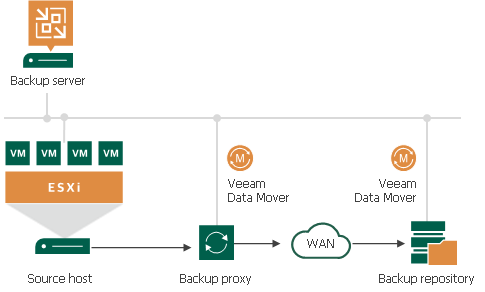

You can reduce it to reduce the file server load at the cost of slower backups. And you control this concurrency by defining available task slots.Īs far as high file server load during backup, this is when the Backup I/O Control setting on the registered file share comes into play. Because the scheduler will never have them doing backup all it once, but rather one by one (or a few at once) depending on available task slots. So with Veeam you should never worry about all jobs starting at once, in fact it is the recommended way. There's no granularity because Veeam scheduler controls it automatically and intelligently based on available resources (concurrent tasks slots on proxies and repositories). This will not change anything else in terms of performance, source or backup storage load, because each file share will be processed with its own dedicated task either way. Generally we run 4 vCPU and 4GB RAM, but I have needed to increase the RAM to 6-8GB and now I'm thinking about testing increasing the vCPUs to 6.įor the ease of management and reduced backup server resource consumption, it is best to group them all together. Also, I've noticed that since migrating to using NAS Backup, I have had to increase the VM resources on the file servers. Veeam is saying the bottleneck is the source at the moment. It seems like it would be better to stagger these so they aren't all running at the same time and stressing the source and network. If I set the jobs to run every 6 hours, then all 8 jobs will run at the same time every 6 hours. I ask, because the granularity for multiple backups during the day is not there in the settings.

Is this the recommended approach or should I be combining these files shares into combination jobs? Most file servers have 1 object (or folder), but we do have 1 VM with 10 objects/folders. The connection from vSphere to the physical PowerEdge R740xd repository is only 1Gb ethernet.Īt the moment, I've configured each VM to have its own file share backup job. All VMs share the same Dell Compellent 8Gb fiber storage. The nature of our data are tens of millions of general office-type files. Right now there are 8 with anywhere from 5TB to 20TB on each. We host multiple large Windows VM file servers. I didn't know at the time that we couldn't send these jobs to tape, but I saw the other forum discussions saying it's coming, so that's good to hear. We recently added the NAS Backup option to better handle our file backup situation on recommendation from a Veeam Healthcheck. We also ran into issues with trying to locate individual files to restore on backups archived to tape without restoring the whole multi-TB job. The regular health checks were taking days to complete which would overlap daily backups thus causing us to lose out on those days. For the past few years we have been backing up our file servers using standard VMware Backup which was ok.


 0 kommentar(er)
0 kommentar(er)
